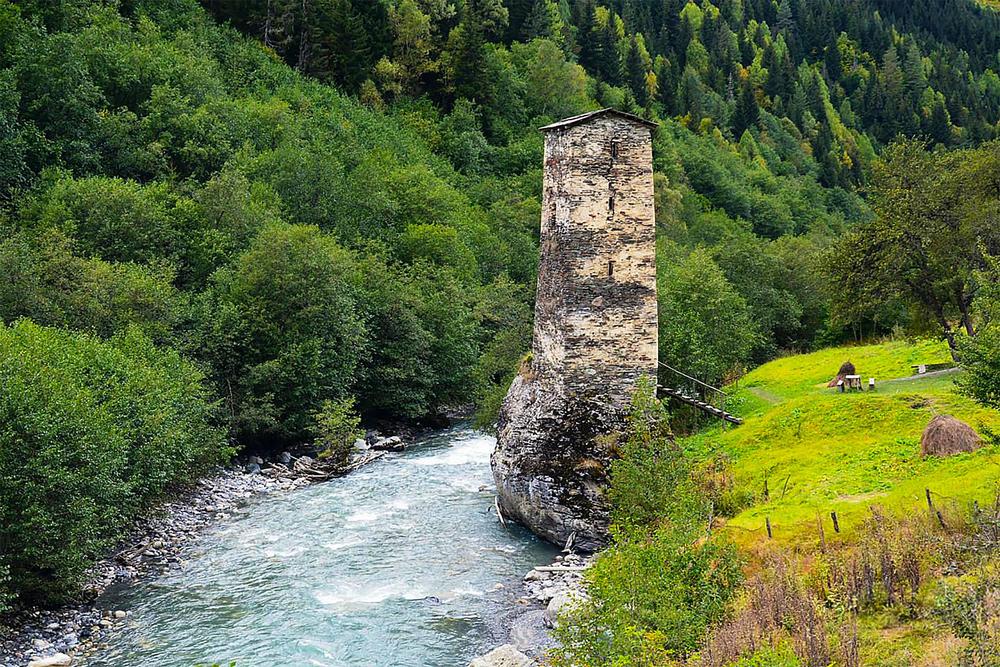Situated in the mountainous village of Khalde within the Mestia municipality in the Svaneti region, the Church of the Savior of Khalde is a testament to resilience and faith, standing proudly at an elevation of 1,900 meters (about 6,234 feet) above sea level. This 19th-century structure, constructed of slate stone, is a hall-type building that subtly narrates the region's tumultuous history.
In the late 19th century, the original medieval church that once graced this location was tragically destroyed during the Khalde rebellion of 1875-1876, a stark period when the village faced demolition by Russian troops. Today, the Church of the Savior symbolizes the resilience of the Svaneti people, having been rebuilt on the foundations of the devastated medieval edifice.
Careful preservation efforts have ensured that remnants of the old church find their place in the new structure. This is seen in the cornice stones, remnants of the old church, which now serve as decorative elements. The church's western wall features an arched entrance, a nod to traditional architectural styles.
While the church's exterior stands stark and sturdy against the harsh mountain weather, the interior has an understated charm. The interior and exterior plaster have been partially preserved, adding to the authentic feel of the church. A new wood-fretted door and iconostasis, contributions from local woodcarver Jaba Jokhadze, add to the church's overall charm and architectural unity.
One of the church's most treasured artifacts is a small 10th-century metalwork icon of St. George, a revered figure in Georgian Christianity. This historic piece stands as a testament to the artistry and devotion of the time.
In its endurance and revival, the Church of the Savior of Khalde resonates with the resilient spirit of Svaneti, preserving and celebrating a rich history of faith and determination against formidable odds. Its impressive altitude and rugged construction mirror the tenacity and vigor of the region it calls home.












